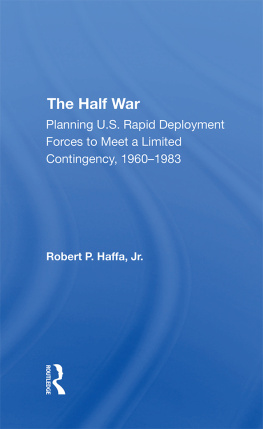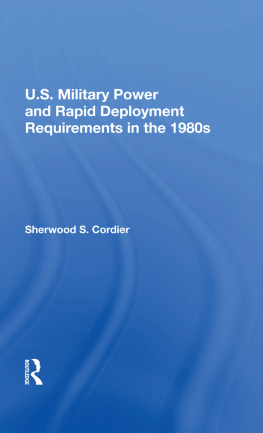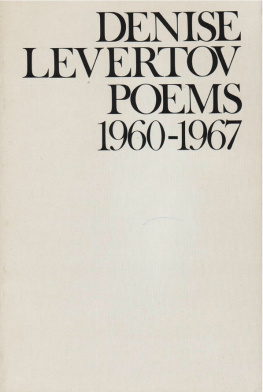The Half War
Westview Replica Editions
The concept of Westview Replica Editions is a response to the continuing crisis in academic and informational publishing. Library budgets for books have been severely curtailed. Ever larger portions of general library budgets are being diverted from the purchase of books and used for data banks, computers, micromedia, and other methods of information retrieval. Interlibrary loan structures further reduce the edition sizes required to satisfy the needs of the scholarly community. Economic pressures on the university presses and the few private scholarly publishing companies have severely limited the capacity of the industry to properly serve the academic and research communities. As a result, many manuscripts dealing with important subjects, often representing the highest level of scholarship, are no longer economically viable publishing projects--or, if accepted for publication, are typically subject to lead times ranging from one to three years.
Westview Replica Editions are our practical solution to the problem. We accept a manuscript in camera-ready form, typed according to our specifications, and move it immediately into the production process. As always, the selection criteria include the importance of the subject, the work's contribution to scholarship, and its insight, originality of thought, and excellence of exposition. The responsibility for editing and proofreading lies with the author or sponsoring institution. We prepare chapter headings and display pages, file for copyright, and obtain Library of Congress Cataloging in Publication Data. A detailed manual contains simple instructions for preparing the final typescript, and our editorial staff is always available to answer questions.
The end result is a book printed on acid-free paper and bound in sturdy library-quality soft covers. We manufacture these books ourselves using equipment that does not require a lengthy make-ready process and that allows us to publish first editions of 300 to 600 copies and to reprint even smaller quantities as needed. Thus, we can produce Replica Editions quickly and can keep even very specialized books in print as long as there is a demand for them.
About the Book and the Author
The Half War: Planning U.S. Rapid Deployment Forces to Meet a Limited Contingency, 1960-1983
Robert P. Haffa, Jr.
This book offers a strategic, organizational, and logistical analysis in a historical context of the planning of conventional forces to meet a limited contingency. The central question is: Why, from 1960 to 1982, did the U.S. fail to construct a coherent limited contingency force? Analysis of a series of comparative case studies reveals that the strategic concept to the "half war," or limited contingency, was never articulated adequately enough to support specific force planning. Organizations designed to oversee and command limited contingency forces, fragmented by interservice rivalries and the absence of joint doctrine, lacked multiservice composition and a unified command structure. A search for economy in limited contingency forces seemed justified by illusions about their capabilities. Low budgetary priority and Congressional perceptions that enhanced U.S. rapid deployment capabilities would encourage U.S. global intervention contributed to the lack of logistical and mobility systems dedicated to them.
The wider intent of this study is to shed light on the general purpose force planning process and to suggest policy guidance as the United States once again embarks on a major conventional force planning initiative. Rather than being trapped by the past, new efforts to meet vital U.S. military interests below the nuclear threshold must identify "half war" planning contingencies, structure unified commands capable of directing tailored conventional forces in specific theaters, and provide adequate strategic mobility systems.
Colonel Haffa is associate professor and deputy department head in political science at the U.S. Air Force Academy.
For Patricia Rita andEllen Louise
The Half War
Planning U.S. Rapid Deployment Forces to Meet a Limited Contingency, 1960-1983
Robert P. Haffa, Jr.
First published 1984 by Westview Press
Published 2019 by Routledge
52 Vanderbilt Avenue, New York, NY 10017
2 Park Square, Milton Park, Abingdon, Oxon OX14 4RN
Routledge is an imprint of the Taylor & Francis Group, an informa business
Copyright 1984 Taylor & Francis
All rights reserved. No part of this book may be reprinted or reproduced or utilised in any form or by any electronic, mechanical, or other means, now known or hereafter invented, including photocopying and recording, or in any information storage or retrieval system, without permission in writing from the publishers.
Notice:
Product or corporate names may be trademarks or registered trademarks, and are used only for identification and explanation without intent to infringe.
Library of Congress Cataloging in Publication Data
Haffa, Robert P.
The half war.
(A Westview replica edition)
Bibliography: p.
1. United States. Rapid Deployment Force. 2. Military
planning--United States--History--20th century.
3. Limited war. I. Title.
UA23.H24 1984 355.3'5 83-23435
ISBN 13: 978-0-367-29276-8 (hbk)
During the course of this study, I benefitted from the advice and support of a number of individuals and organizations. I would like to thank them here for aiding in the accomplishment of this work. I would especially like to thank Professor William W. Kaufmann of the Massachusetts Institute of Technology for his guidance and assistance during my graduate program at MIT, where most of the research in support of this book was accomplished. His aid and advice throughout the writing of this study were invaluable. Additionally, I owe a large intellectual debt to Ted Greenwood for his advice on the analytical structure of the book, and for his help in translating my general thoughts into specific sentences. Stephen M. Meyer's instructive comments and criticisms also helped. If this study demonstrates a coherent research design, he deserves a healthy share of the credit.
From October 1980 until August 1983, I interviewed over fifty senior military officers and civilians active in the State and Defense Departments knowledgeable of the force planning process as it relates to "half war" strategy, organization and support. Although all of their names and positions are not listed here, the book could not have been written without their individual and collective help. I would particularly like to thank Commander Tim Travis at the Rapid Deployment Joint Task Force Headquarters for opening many doors that otherwise might have remained closed. I am grateful to Lt. Colonel Drue DeBerry for making available to me the resources of the Office of Air Force History, as well as for sharing with me his own research efforts. Thanks also go to Lt. Colonel Walt Causer at USCENTCOM for his help during my visit to that organization, as well as for his aid in the clearance process.
The bulk of the research and writing of this book was accomplished while I was a student at MIT under the auspices of the Air Force Institute of Technology, and after my return to the Department of Political Science at the Air Force Academy. Lt. Colonel Jack Kitch at AFIT and Ms. Anne Grazewski at MIT deserve thanks for their careful administration of my academic program, while my appreciation is also extended to Brigadier General Erv Rokke and Lt. Colonel Curt Cook at the Academy for their enduring support. The manuscript was typed and corrected by Janice Clayton. Captain Nancy Linzy was a patient and persistent proofreader. Quite simply, the book could not have been published without their efforts. Also essential in bringing the book to print were Fred Praeger at Westview, who spotted a book wrapped within a dissertation, and Dean Birkenkamp, who demonstrated patience and understanding as my editor.











